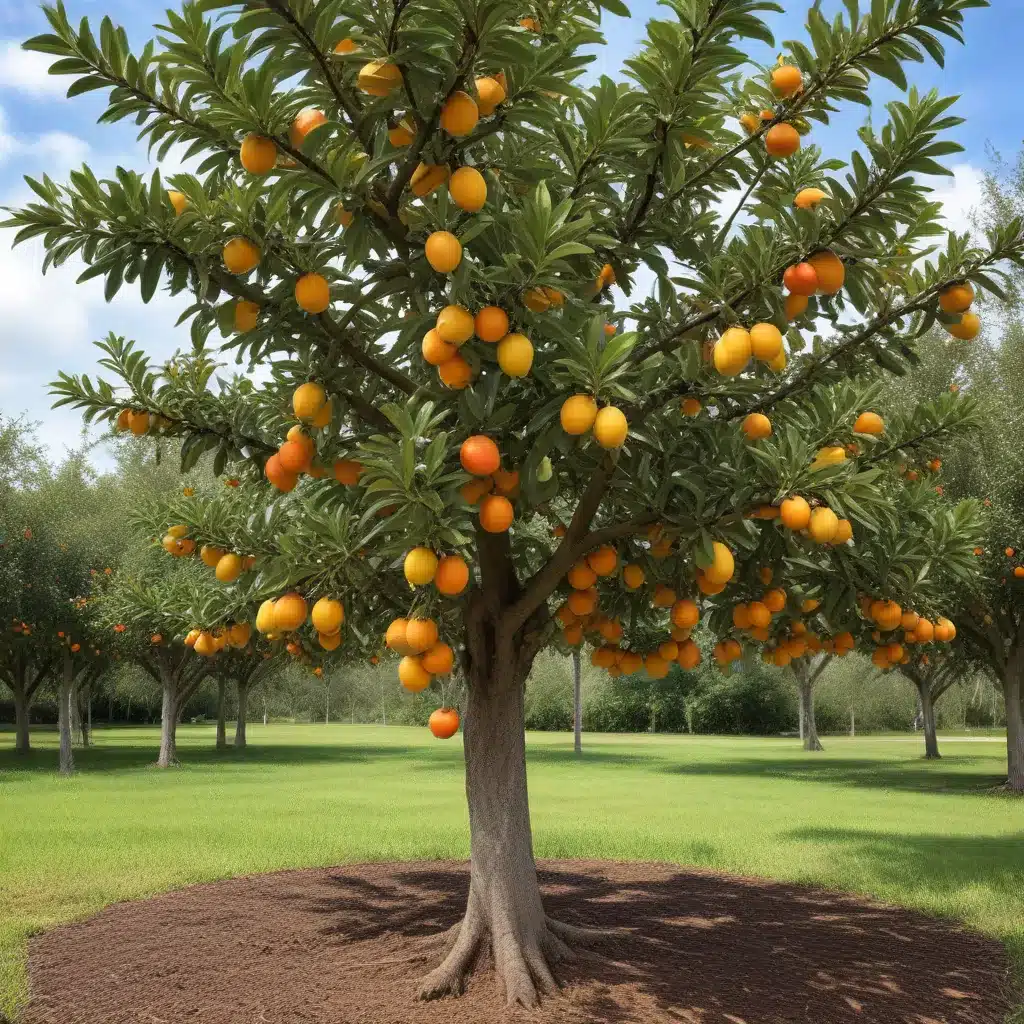
Optimizing Fertilizer Regimes for Subtropical Fruit Trees in Florida
Maintaining a vibrant, productive subtropical fruit tree orchard in Florida requires a harmonious balance of irrigation, nutrient management, and pest/disease control. While the warm, humid climate provides an ideal growing environment, the region’s sandy, often nutrient-poor soils necessitate careful fertilization practices to ensure the long-term health and fruitfulness of your trees.
Soil Condition Considerations
The sandy, well-draining soils common across much of South Florida pose unique challenges for fruit tree cultivation. These soils tend to have a naturally low pH and limited organic matter content, which can restrict the availability and uptake of essential macro- and micronutrients. Regular soil testing is crucial to determine the precise nutritional needs of your trees and guide an optimal fertilizer regime.
Maintaining an ideal soil pH between 6.0 and 6.5 is critical for promoting nutrient solubility and root health. If your soil tests reveal an unbalanced pH, lime or sulfur amendments may be needed to adjust accordingly. Similarly, incorporating organic matter through compost or mulch can enhance the soil’s water-holding capacity and nutrient-supplying capabilities over time.
Ensuring proper drainage is also essential, as subtropical fruit trees are susceptible to root rot and other moisture-related issues if grown in constantly saturated soils. Improving drainage through strategic tillage, raised planting beds, or tile systems can help mitigate these problems.
Pest and Disease Management
The warm, humid climate of South Florida also creates an ideal environment for a variety of insect pests and fungal diseases that can threaten the health and productivity of your fruit trees. Proactive monitoring and prevention are key to managing these challenges.
Some of the most common insect pests include aphids, thrips, mites, and scale insects, which can stunt growth, reduce yields, and make trees more vulnerable to disease. Fungal diseases such as anthracnose, scab, and powdery mildew can also significantly impact fruit quality and tree vitality.
Implementing an integrated pest management (IPM) approach that combines cultural controls, biological controls, and targeted chemical applications as needed can help keep these issues in check. Regularly inspecting trees, removing infected plant material, and utilizing organic or systemic pesticides/fungicides when necessary are all essential components of a successful subtropical fruit tree pest and disease management strategy.
Fertilizer Regimes
Developing an optimal fertilizer regimen is crucial for sustaining the long-term health and productivity of your subtropical fruit trees in South Florida. While specific nutrient requirements may vary by species and cultivar, there are some general principles to consider.
Macronutrient Needs:
– Nitrogen (N) promotes vegetative growth and leaf development.
– Phosphorus (P) supports root growth and fruit development.
– Potassium (K) enhances disease resistance, drought tolerance, and overall tree vigor.
Micronutrient Considerations:
– Iron (Fe) is crucial for chlorophyll production and healthy foliage.
– Zinc (Zn) plays a role in flower and fruit formation.
– Boron (B) aids in pollen tube growth and fruit set.
A balanced 10-4-10 or 12-4-8 fertilizer formulation can serve as a solid foundation for most subtropical fruit trees in South Florida, with additional micronutrient supplementation as needed based on soil test results and tree performance. Applying fertilizers 3-4 times per year, typically in early spring, late spring, midsummer, and fall, can help ensure a steady supply of essential nutrients throughout the growing season.
When selecting fertilizers, consider both organic and synthetic options. Organic fertilizers, such as compost, bone meal, or fish emulsion, can gradually release nutrients and improve soil structure over time. Synthetic fertilizers, on the other hand, provide a more immediate nutrient boost but may require more frequent application. Combining the two approaches can often yield the best results.
Palm Maintenance Practices
Palms, including the iconic coconut palm and date palm, are a beloved part of the South Florida landscape. Proper pruning, nutrient management, and transplanting/relocation procedures are essential for maintaining the health and appearance of these tropical beauties.
Regular pruning to remove dead or dying fronds, as well as any “keikis” (offshoots) or suckers, can help prevent the buildup of debris and promote overall tree vigor. Monitoring for nutrient deficiencies, such as yellowing or stunted growth, and addressing them with targeted fertilizer applications or foliar sprays is also crucial.
When transplanting or relocating palms, it’s important to carefully manage the root system to minimize stress and ensure a successful transition. Proper site preparation, planting depth, and aftercare can all contribute to the long-term success of your palm trees.
Planting Guidelines
Selecting the right site and rootstock for your subtropical fruit trees is essential for their long-term health and productivity. Look for well-drained, full-sun locations with ample room for the trees to spread their canopy. Choosing disease-resistant and drought-tolerant rootstocks can also help your trees thrive in the South Florida climate.
Proper spacing and orientation of your trees is also important, as it can affect light penetration, air circulation, and ease of management. Consult with a local South Florida Trees specialist to determine the optimal planting layout for your specific cultivars and site conditions.
Tropical Storm Preparedness
Given the South Florida region’s vulnerability to tropical storms and hurricanes, it’s crucial to consider wind resistance and flood mitigation strategies when cultivating your subtropical fruit tree orchard.
Selecting wind-tolerant cultivars, strategically pruning canopies to reduce wind drag, and anchoring trees with staking or guying can all help minimize storm damage. Implementing drainage improvements and elevated planting beds can also safeguard your trees against the threat of flooding.
In the event of storm-related damage, knowing how to prune and treat injured trees can be the difference between a swift recovery and long-term decline. Consulting with a South Florida Trees arborist can provide invaluable guidance on post-storm recovery and tree care.
By understanding the unique growing requirements of subtropical fruit trees, developing robust pest/disease management and nutrient regimes, and incorporating storm-resilient practices, you can cultivate a thriving, productive fruit tree orchard in the heart of South Florida.


